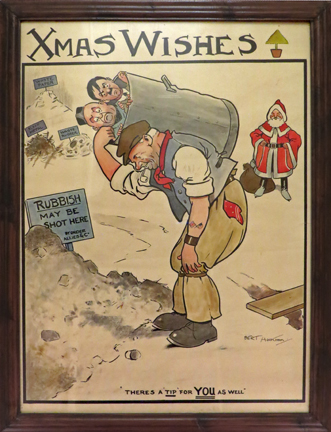
It’s only been in the past 50 years that the work of illustrators has been recognized as art. Even some artists themselves argued that the real art was the finished product, the print. As a result, no one handled an illustrator’s work with any consideration for value or posterity. Such a loss of creativity!
Consider the craft of these earliest illustrators. Before 1820, the artist covered a copper plate with wax, then carved the design onto the plate with a knife-like tool. Each illustration took 6-8 hours to complete and left the artist with bloodied fingers. After about 100 impressions the plate was discarded.
Later, illustrators carved their designs directly onto boxwood slabs. During the early years of its 161-year history, Punch Magazine used boxwood engravings exclusively. After each printing, each engraving was discarded – probably used as firewood.
By the 1890s, illustrators had the difficult task of etching their creations onto stone lithographic plates. And Victorian taste demanded a high return for their investment – wanting every single inch of the plate covered with detail. Again, once the print was made, the original work was destroyed.
Fast forward to post WWII when styles were influenced by Japanese prints and Art Deco. Clean lines replaced superfluous detail and saturated color was de rigueur. Why? The poor quality of newsprint dulled down colors. To call attention to the message, brighter, primary colors helped make the sale. As usual, the original – now watercolor or gouache on paper, was tossed out after use.
Unless pulled out of the trash by admirers, few of these original watercolors were saved. Exceptions, like these by English illustrator, Bert Hookham, probably exist today because they were kept by the artists themselves as examples of their work. Lucky for us!
Saved and shown above:
Size: 36″ High X 25″ Wide
